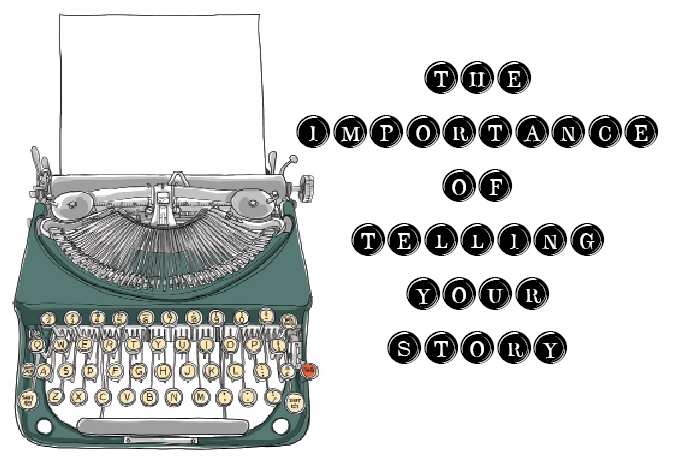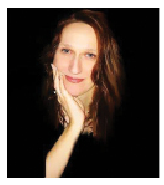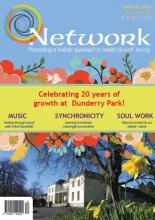The importance of telling your story

In 2010, I started a blog, its birth an anonymous opening up of my inner life and my first venture into the online world of 'self-disclosure'. I began by sharing short stories and poetry as well as accounts of personal experiences, building up over time a large collection of writing.
As both a participant and observer, I continue to find intriguing how we can feel compelled to share intimate details from our lives in this way, far more intimately than we may be inclined to do in our day to day physical world. Perhaps, there's less fear of rejection, of judgment.
We can filter what we like, create a 'diffused intimacy' with the reader, become more self-aware and, for some, find comfort through the sharing of painful experiences.
As a mental health social worker, I’ve seen the benefits of self-disclosure. It is an essential component to personal wellbeing and to the development of social bonds and coping mechanisms, particularly when shared in a supportive setting with the appropriate people with whom we can share our deepest hopes, fears and insecurities.
Certainly the expansion of social networking sites such as Facebook and Twitter has provided much opportunity for online disclosures, with millions of people sharing intimate details from their lives each day, oftentimes with people they have never met and about whose day to day activities they know very little apart from the impressions created and managed by the network users. Intimate disclosures within this context challenge pre-existing notions about boundaries and personal relationships, formerly rooted solely within structures such as work, partnerships, marriage and so on.
With the growth of social networking sites, I am frequently witness to the discussions of friends and colleagues about how these sites affect personal and family wellbeing. Certainly, sitting alone in a room, an individual has the freedom to be more disinhibited and to manage and modify their online persona as they see fit. They have the freedom to disconnect at the touch of a button, which means they are also exposing themselves to being on the receiving end of this.
With reduced social cues, lack of physical connection and less public self-awareness, the entire concept of what it means to develop and maintain relationships has changed dramatically over the past ten years in particular. From a therapeutic perspective, this means that our approach to relationships and to self-disclosure must change accordingly.
As a mental health therapist, much of my work has been in the development of life story books, incorporating words and images to help build upon each person's unique experience/story and to set out, in multi-media or book form, an autobiographical narrative created during the therapeutic process, the focus being on personal accomplishments and the mapping out of goals. Some of the more creative storytellers also include their art and poetry.
Life story books share many similarities with personal blogs, which too are reflections on life, personal interest stories, self-disclosures and a sharing of music and images that are of particular significance to the individual, all contained within a timeline, and in much the way Facebook now operates. The process of sharing and recording life story information is facilitated by a health care practitioner. Traditionally life story books have been created with older adults as part of reminiscence therapy and also with children and adolescents who have been through the fostering and adoption processes. With younger people in particular, digitised versions are used more and more.

A life story book is divided into sections, each one capturing significant moments in the individual’s life. These include friendships, loves, achievements, hobbies, secrets and dreams. It is most usually written in chronological order, integrating the past into the future. Some narrators like to include quotes that are particularly significant to them. These are often included at the beginning of a section along with gentle prompts to help guide the individual on their journey of self-discovery. It is important that the narrator feels safe and comfortable before embarking on this journey. The gathering together of stories can bring acceptance of the past and facilitate moving forward.
The book is a precious keepsake, one that the individual can return to when there is a need to deal with old feelings and reflect on challenges overcome. It provides a structure to address and clarify past challenges and is also a means of communication of painful issues. Oftentimes, personal letters, CDs, drawings, photos, etc. are included. The life story book can take the form of a handwritten or typed book with pockets for mementoes, and is bound in such a way that more information can be included in the various sections at later dates. It can also take the form of a video book, which, again, can be expanded upon at later dates.
The life story book is an ongoing part of the therapeutic process, and once the therapy ends, the book remains with the individual. As a facilitator, I have seen self-esteem enhanced, relationships within the individual’s personal life better understood and explained. There is often greater self-understanding and a reduction in feelings of helplessness and anxiety.
There is no doubt but that the journey of self-disclosure is complex. We can be left feeling vulnerable and exposed if we find ourselves without a safe environment. The online world sees us developing new kinds of relationships. In the process, we may run the risk of damaging other relationships in our lives. Ultimately, however, this journey is about the development of a relationship with ourselves and about the exploration of that journey.
Thomas Szasz put it well when he said ‘People often say that this or that person has not yet found themselves. But the self is not something one finds. It is something one creates’.

Eabha Rose Hartel is a mental health therapist and short story writer. She is a founding member of Poets and Artists for a Different World Movement. Her writing has been published both online and in print and she keeps a public blog entitled Theatre of Words.
Eabha lives and works in County Waterford, Ireland. She can be reached by email at [email protected]
Latest Issue
Upcoming Events
-
17/04/2020 to 26/04/2020
-
18/04/2020
-
23/04/2020
-
15/05/2020 to 23/05/2020
-
16/05/2020 to 17/05/2020
Recent Articles
Article Archive
- November 2011 (2)
- January 2012 (3)
- February 2012 (2)
- March 2012 (2)
- April 2012 (4)
- May 2012 (4)
- June 2012 (1)
- July 2012 (3)
- August 2012 (2)
- October 2012 (2)

